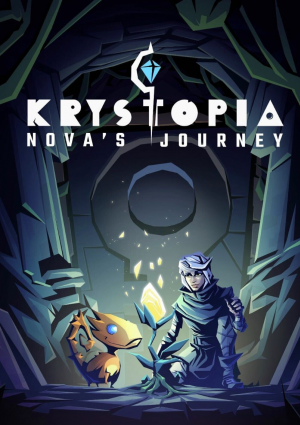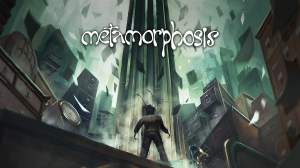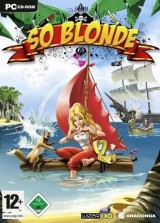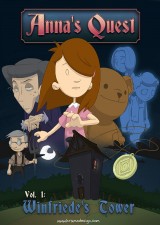Review for Krystopia: Nova’s Journey
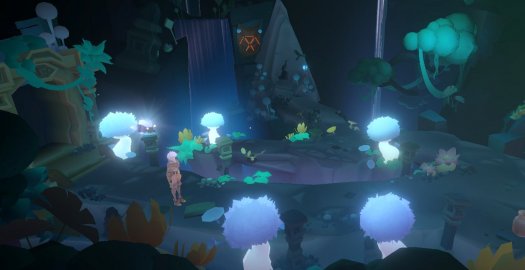
Game information
Krystopia: Nova’s Journey is the continuation of the adventures of Nova Dune, a space-based salvage operator who landed on a planet she thought would be an easy score but instead discovered the source of a major conflict between its inhabitants. As before, players will explore various locations both underground and on the surface to solve a variety of puzzles, but this time you’ll meet characters from both sides of the issue. While a few questionable design choices remain, there is much greater gameplay variety this time around, so fans of the first should enjoy playing this one even more, though you’ll once again come away without any narrative closure at the end.
Although it is not absolutely necessary to have played Krystopia: A Puzzle Journey before tackling Nova’s Journey, it is highly recommended. The backstory to be pieced together is greatly expanded here, so if you missed the first game you will certainly feel as if you came in halfway through. The opening cinematic is even more impressive this time, with photorealistic graphics, excellent sound effects, orchestral music that builds and wanes when appropriate, and narration provided by the same talented voice actor to catch you up on what has happened since the end of the original game. It appears that Nova has developed some sort of amnesia and is struggling to maintain her sanity.
Following this introduction, a few differences from the last game are immediately noticeable. Levels are now presented in third-person view, with the screen completely filled in each scene. This allows you to see Nova at all times, as well as the various characters you will meet later. Other than this change, the overall presentation is pretty much the same, with hand-drawn objects and backgrounds using a muted colour palette of greens, blues and orange. The first two chapters are set underground but are nevertheless filled with lots of plant life, such as vines hanging from the ceiling and other glowing flora sprinkled about. In the third chapter you will emerge on the planet’s surface, where you will see much more of the natural environment. There is plenty of greenery here, as well as rivers, ponds, and a huge waterfall in the background. Purple plants and odd-looking trees can be found in nooks and crannies as you explore, and there are also some interesting rock formations that really add to the atmosphere.
Brief tutorial pop-ups once again explain the basics of gameplay: using the left mouse button to move, interact with hotspots, and pick up items; holding the button down to drag the camera around the screen; along with explanations of how power crystals work and other useful information as needed. Your trusty backpack remains in the top left of the screen for inventory items as you collect them. Unlike in the previous game, there are no data crystals to collect this time, though you’ll still want to keep an eye open for relics. There are no text descriptions provided for inventory items, but you can click on them to get details from Nova that will give you clues on how to use them. The icon at the top right allows you to save and return to the main menu, though exiting the game will always record your progress first anyway.
Nova’s Journey is split into three chapters, and, like its predecessor, the main menu screen displays your progress in finding collectibles. New is a percentage progress bar displayed just above the collectibles count at the bottom of each chapter icon. As before, it is not necessary to collect all items or achieve a 100% score to finish the game. You can revisit each completed chapter if you like, but there is no real need to do so except to satisfy your curiosity or to earn additional achievements.
The first item you find is important to the story as it’s a doll that resembles the last figure you saw at the end of the previous game. Nova refers to this as “creepyface,” and at times she talks to it. This is really just a form of talking to herself, of course, which serves as a kind of therapy as you progress, since Nova is haunted by the fact that she can’t remember certain events in her past.
As in A Puzzle Journey, the early puzzles are pretty easy: you turn a crank to open a door to the next area, prompt a flying lightning bug to create an organic bridge needed to solve a laser-charging puzzle to open the next door, and then use the bridge to access a slider control that moves the charged crystal to another laser-charging puzzle to open the door to the next level. You’ll want to take note of the pattern below the bridge before you leave, though, as you will need that to solve a pattern-matching puzzle (yes, they are back too) in the next area. Fortunately, there is a much greater variety of puzzle types as you proceed, as well as new ways to solve them, which is a welcome change from the over-reliance on only a couple of puzzle types last time.
You are now able to combine certain items either within the inventory or with other environmental objects to create new ones. Although this is rarely used, I had fun trying to figure out which things I could combine and which puzzles required it. An early example comes when you need to figure out a way to cause an “illuminated flower” to bloom and then light the way to a clue to another puzzle. There are many such multi-layered puzzles throughout the game that I thoroughly enjoyed solving. Additional tasks you will encounter include tracing a line through a grid on a panel so it passes by nodes the indicated number of times, collecting and assembling the parts of a hang glider, and many more. Some are fairly easy while others are quite challenging.
The difficulty is mainly the result of several puzzles not being properly clued. In some cases you know what must be done, but it is not clear exactly how or what the requirements are. For instance, there is a steam pipe puzzle with several spots where you can close or open valves using plumber’s wrenches that remain in place once used, but there is no indication of how many wrenches you need. As you discover them throughout the level, you can never be sure whether you’ve found them all, and it can be frustrating to keep returning to check until you finally have enough. A simple hint indicating the number needed would have been most welcome. Some puzzles rely on tedious trial-and-error, such as the need to click on dancing plants in a specific order to arrange them in a certain pattern. While not difficult, again there’s no clue (at least that I ever found), so brute force is needed. Other puzzles can be even more frustrating and could force you to consult a walkthrough. For example, in one room you need to find five hidden glyphs to enter as a combination to open a safe. Some of them are well-hidden, and even after you discover them all, there is no apparent clue as to the correct order, and guessing correctly would take quite a bit of time.
Another new gameplay feature is a sidekick to help get you out of tight spots. Early on you’ll discover a creature trapped under a steel beam, and after freeing him he will immediately become your BFF. Nova names him Skrii (due no doubt to the noise he makes when you talk to him), and he very much resembles Pikachu from the Pokémon games – yellow in colour with big eyes and a tail to match. From that point on, Skrii follows you everywhere, and you can talk to him when the speech bubble above this head allows, although all of his replies are the same: “Skrii?” Like the creepyface doll, this option serves more to reveal Nova’s emotional state than to provide any meaningful dialog.
Much more importantly, after you have freed Skrii from his trap, you can take control of him to move him into a small area that Nova could not access, where he too will need to solve a laser-alignment puzzle. I was interested to see how indie developer Antler Interactive would exploit this feature further, but alas, I was disappointed. There are only two other puzzles in the entire game where playing as Skrii is used to solve a puzzle, and neither requires using both characters cooperatively. Definitely a missed opportunity for more advanced and enjoyable puzzle solving.
While there are many inventive and clever puzzles to solve, a good deal of play time is spent on character interaction and plot development. It starts near the end of the first chapter, when you meet a mysterious entity Nova thinks is her subconscious playing tricks with her mind. The entity appears real, however, and it indicates why Nova has lost most of her memories and reveals a secret power source that is the cause of what has been happening on the planet. In the second chapter you will meet a number of other characters, including Nix, whose story was prevalent in the first game. This meeting results in you needing need to find several items and give them to Nix to build some sort of device to advance.
As you continue your exploration, you will meet other natives including the matriarchal leader named The Oga, as well as aliens who came to the planet which the natives refer to as “Titans.” You can talk to all of them when you first meet, and then later when you see a speech bubble above them. Some will even offer valuable clues or provide an inventory item needed to solve a puzzle. There is a great deal of dialog to work through, and since none of them (including Nova) are voiced, be prepared for a LOT of reading. Except for rare occasions where you are actually given a choice of response (which has no impact on the course of the game or ending with one key exception), this is essentially a click-fest where you simply follow each conversation to the end. Be aware that after you have gone through a conversation, however, you cannot talk to that character again on the same subject, so you may want to take notes of any important points.
As you carefully follow the many conversations, it becomes clear that an all-too-common injustice has occurred here: the indigenous population has been overrun and suppressed by a technologically superior foreign invader looking to exploit the riches of the planet. A local rebellion has devised a plan to destroy the intruders, but not all the natives agree, believing a peaceful settlement can be reached. As the protagonist, it is up to you to decide which way this will end. With tensions mounting, you must converse with both sides of this debate and must side with one of them. The finale is suitably dramatic, but it seems that no matter what you choose, the end result is the same. In a post-credits scene you see all the characters you’ve met, and you can click on each one to get their perspective on what has transpired. While this provides a degree of closure, the largest questions remain unanswered, leaving room for another chapter to continue the story of the conflict between these two peoples.
There is certainly a lot to like about this second entry in the Krystopia series, with the addition of more story-driven gameplay, varied puzzle design, and a mix of characters to flesh out more of the planetary conflict. And yet after another 4 – 5 hours of play time, it still feels like nothing has been resolved. The series seems poised to continue with a third installment, and I hope it does, as I’m encouraged by the improvements made this time around and am eager to see where the story goes next.


